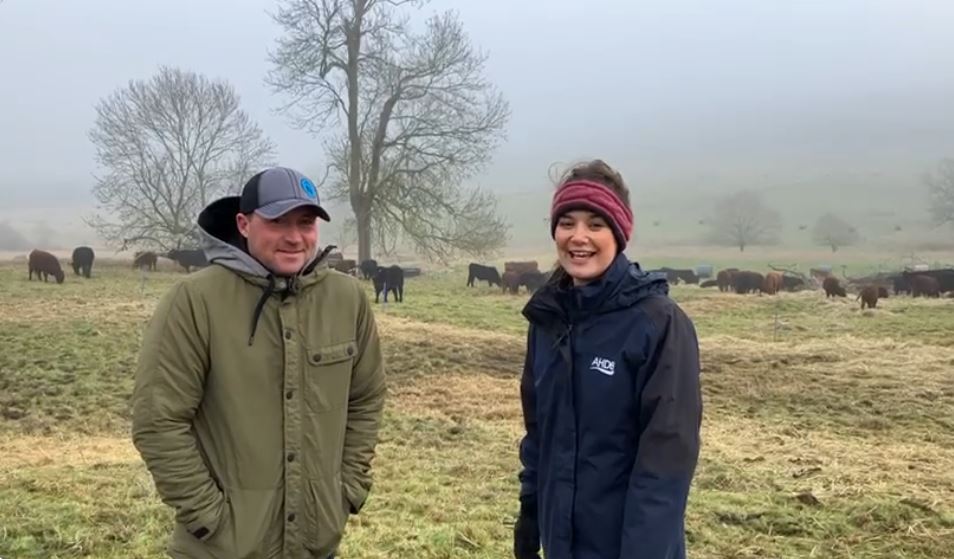Keeping up with our counterparts in Canada
Friday, 3 February 2023
At the end of January, the AHDB Beef & Lamb engagement team arranged for renowned Canadian suckler cow producer, Arron Nerbas, to visit three English suckler farms and deliver three events discussing what it takes to produce a profitable suckler cow. Our Senior Knowledge Exchange Manager Sarah Penrose gives her account of the events.
For years I have followed Nerbas Bros. on Twitter. Enjoying their regular updates and videos from their 5000ac ranch in Manitoba, Canada. So when my colleague said she had managed to persuade Arron Nerbas to visit the UK, I jumped at the chance to run one of the AHDB on-farm meetings he was speaking at in Oxfordshire.
I picked Arron up from Telford, where he had been speaking at the British Cattle Breeders Conference and we headed to the event kindly hosted by FAI Farms in Oxford. And of course like all beef enthusiasts, we spent the two and a half hour car journey talking about nothing but cows! Which believe it or not passed the time really quickly.
What really struck me as we were driving along the M40, was even though we farm 3700 miles away from each other (yes I did Google it) the challenges the suckler beef industry are facing are the same. And you guessed it, it boils down to two things - profitability and environmental pressures. But by adopting the system Arron has, he has been able to adapt his business to meet these challenges.
In the mid 2000’s, after attending a holistic management course, Nerbas Bros. decided to change their system, focusing on a low input, forage-based system. This brought many changes to the type of cow and different traits he desired. As Arron so eloquently put it himself “it’s so important to ensure you have a cow that fits your system, rather than try and fit the system to the cow”.
Arron’s entire breeding policy focuses on producing a functional female that fits his forage based system; focusing on cow size, rumen capacity, legs and feet. Each of his 550 head of Angus cows are required to wean a minimum of 50% of their body weight and rebreed within a 55-day breeding period. Tough ask? Well, it appears not. By selecting carefully and using artificial insemination (AI) over the years, the herd achieves a 90% conception rate, with Arron assisting less than 2% of cows to calve.
But what impressed me the most was that these cows are doing this without ever seeing a nice warm shed or a bucket full of meal. That seems to be the key to the financial challenge associated with sucklers - reducing the winter housing period.
During the event Arron showed us photos of his winter bale grazing system, which looked very impressive (and beautiful) as the cows waded through the thick snow to get to the rows, upon rows of hay bales. But is this something that could be replicated here? Sure, why not?
In fact, each of the three AHDB events which Arron spoke at were outwintering cows on deferred grazing and hay bales. Each with different soil types, infrastructure and farm challenges but they were making it work by ensuring they had the right cow type which fitted the system.
During the event we were able to go and see the cows outwintering at FAI Farms. It was a particularly cold day, but the cows looked fit, healthy and most importantly content outside. Their jackets were obviously much better made than mine!
As the day came to an end and I started to thaw out, I reflected on how important maternal traits are and whether as a UK industry we are doing enough to harness these. Can each of us say that we have a herd of functional cows at home, fit for the systems we operate? And if not, let’s start making the changes now to ensure, if nothing else, we keep up with our global neighbours.
If you’d like to find out more about AHDB’s Maternal Matters campaign, please visit https://ahdb.org.uk/knowledge-library/maternal-matters .


